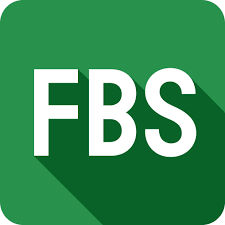
Forex Trading: A Primer
Foreign exchange trading, commonly known as forex or FX, is the simultaneous buying and selling of different currencies. It’s the largest financial market in the world, with a daily trading volume exceeding $5 trillion. Unlike stock markets, which operate within specific hours and days, the forex market operates 24 hours a day, five days a week. This global nature allows traders to capitalize on opportunities around the clock.
Key Concepts in Forex Trading
- Currency Pairs: Forex trading involves the exchange of one currency for another. These are typically represented as currency pairs, such as EUR/USD (Euro/US Dollar), GBP/USD (British Pound/US Dollar), or USD/JPY (US Dollar/Japanese Yen).
- Bid and Ask Prices: When you want to buy a currency pair, you pay the ask price. When you want to sell, you receive the bid price. The difference between these prices is known as the spread.
- Leverage: Forex brokers often offer leverage, which allows traders to control larger positions with a smaller amount of capital. While leverage can amplify profits, it can also amplify losses.
- Pip: A pip (percentage in point) is the smallest unit of measurement in forex trading. It’s typically the last decimal place in a currency pair. For example, a pip in EUR/USD is 0.0001.
- Long and Short Positions: A long position is when you buy a currency pair with the expectation that its value will increase. A short position is when you sell a currency pair with the expectation that its value will decrease.
Factors Affecting Forex Prices
Several factors can influence forex prices, including:
- Economic Indicators: Economic data releases, such as GDP, inflation rates, and employment figures, can significantly impact currency values.
- Interest Rates: Higher interest rates in a country tend to attract more foreign investment, strengthening its currency.
- Political Events: Geopolitical tensions, elections, and other political events can cause currency volatility.
- Central Bank Interventions: Central banks can intervene in the forex market to influence currency values, often to maintain a specific exchange rate.
- Market Sentiment: The overall mood of the market, driven by factors like risk appetite and investor confidence, can affect currency prices.
Forex Trading Strategies
There are numerous trading strategies employed in forex. Some popular ones include:
- Fundamental Analysis: This involves analyzing economic indicators, political events, and other factors to determine the long-term direction of currency pairs.
- Technical Analysis: This strategy uses charts and technical indicators to identify patterns and trends in currency prices.
- Day Trading: Day traders aim to profit from short-term price fluctuations, typically holding positions for a few hours or less.
- Swing Trading: Swing traders hold positions for a few days or weeks, seeking to capture larger price swings.
- Position Trading: Position traders hold positions for extended periods, often months or even years, based on long-term market trends.
Risk Management in Forex Trading
Effective risk management is crucial in forex trading. Here are some essential strategies:
- Stop-Loss Orders: These orders are used to automatically close a position when the price reaches a predetermined level, limiting potential losses.
- Take-Profit Orders: These orders are used to automatically close a position when the price reaches a predetermined level, securing profits.
- Diversification: Spreading your trades across multiple currency pairs can help reduce risk.
- Leverage Control: Avoid using excessive leverage, as it can amplify both profits and losses.
- Emotional Discipline: Trading can be emotionally challenging. It’s important to maintain discipline and avoid impulsive decisions.
Forex Trading Platforms
Forex trading platforms provide the tools necessary for executing trades and analyzing market data. Popular platforms include:
- MetaTrader 4 (MT4): A widely used platform known for its charting capabilities and customizability.
- MetaTrader 5 (MT5): A newer platform with advanced features like hedging and depth of market.
- cTrader: A platform designed for high-frequency trading, offering low latency and advanced tools.
Conclusion
Forex trading offers both opportunities and risks. Success in this market requires a combination of knowledge, skill, and discipline. By understanding the fundamentals, developing effective strategies, and managing risk, traders can increase their chances of profitability.
Additional Resources
- Babypips: https://www.babypips.com/
- Investopedia: https://www.investopedia.com/articles/forex/11/why-trade-forex.asp
- Forex Factory: https://www.forexfactory.com/
Please note: This article provides general information about forex trading. It’s essential to conduct thorough research and consider your risk tolerance before entering the market.









